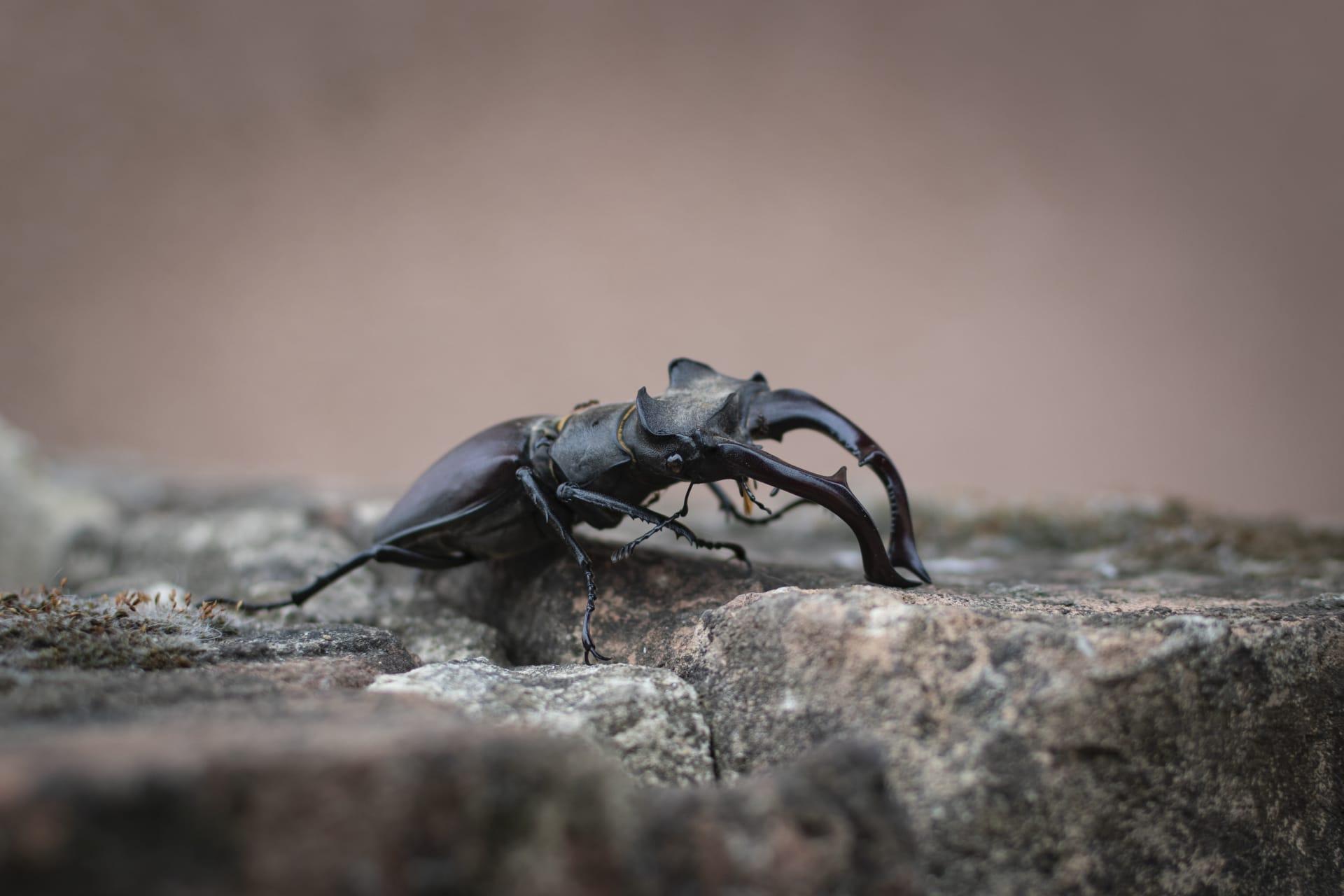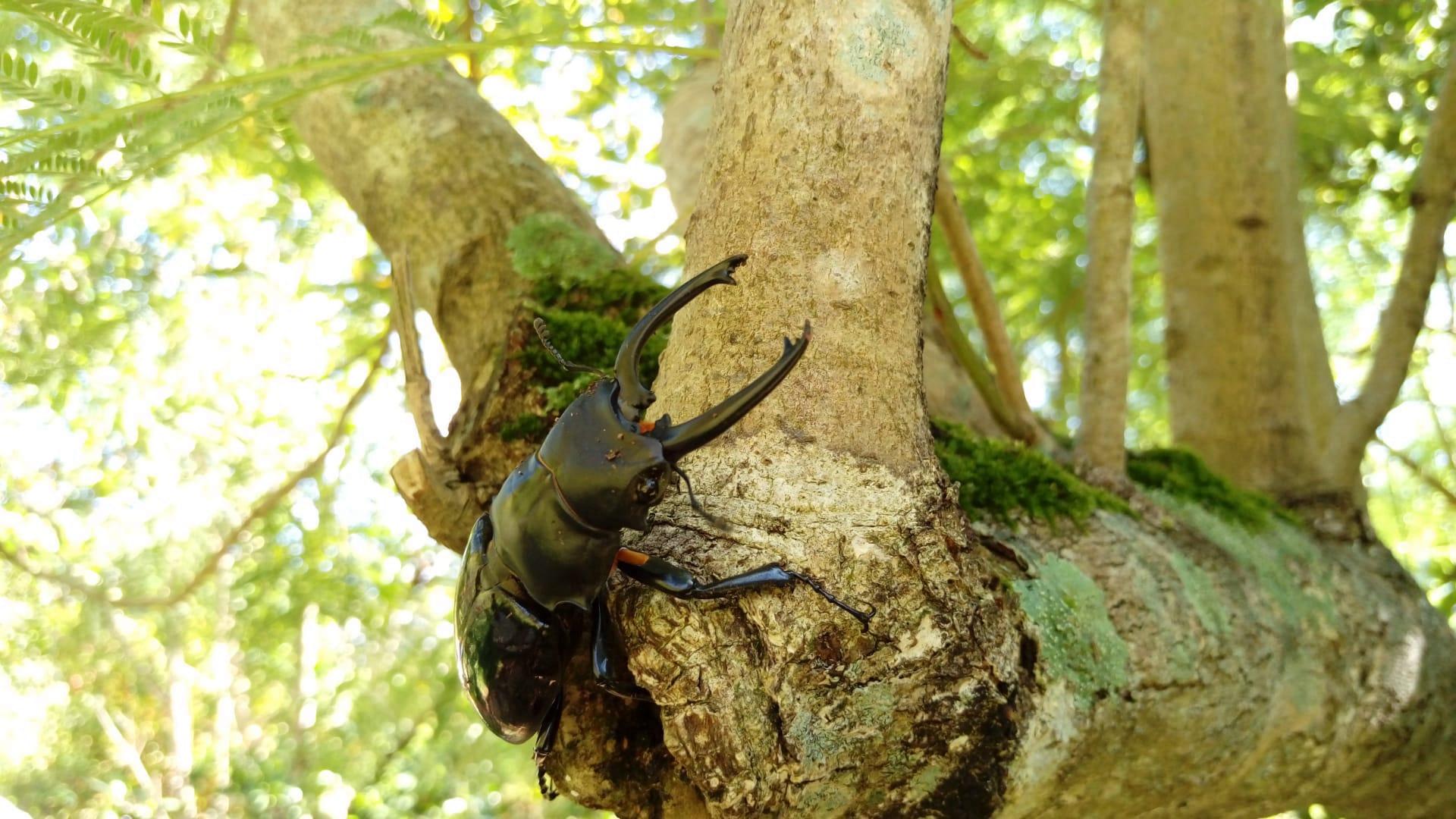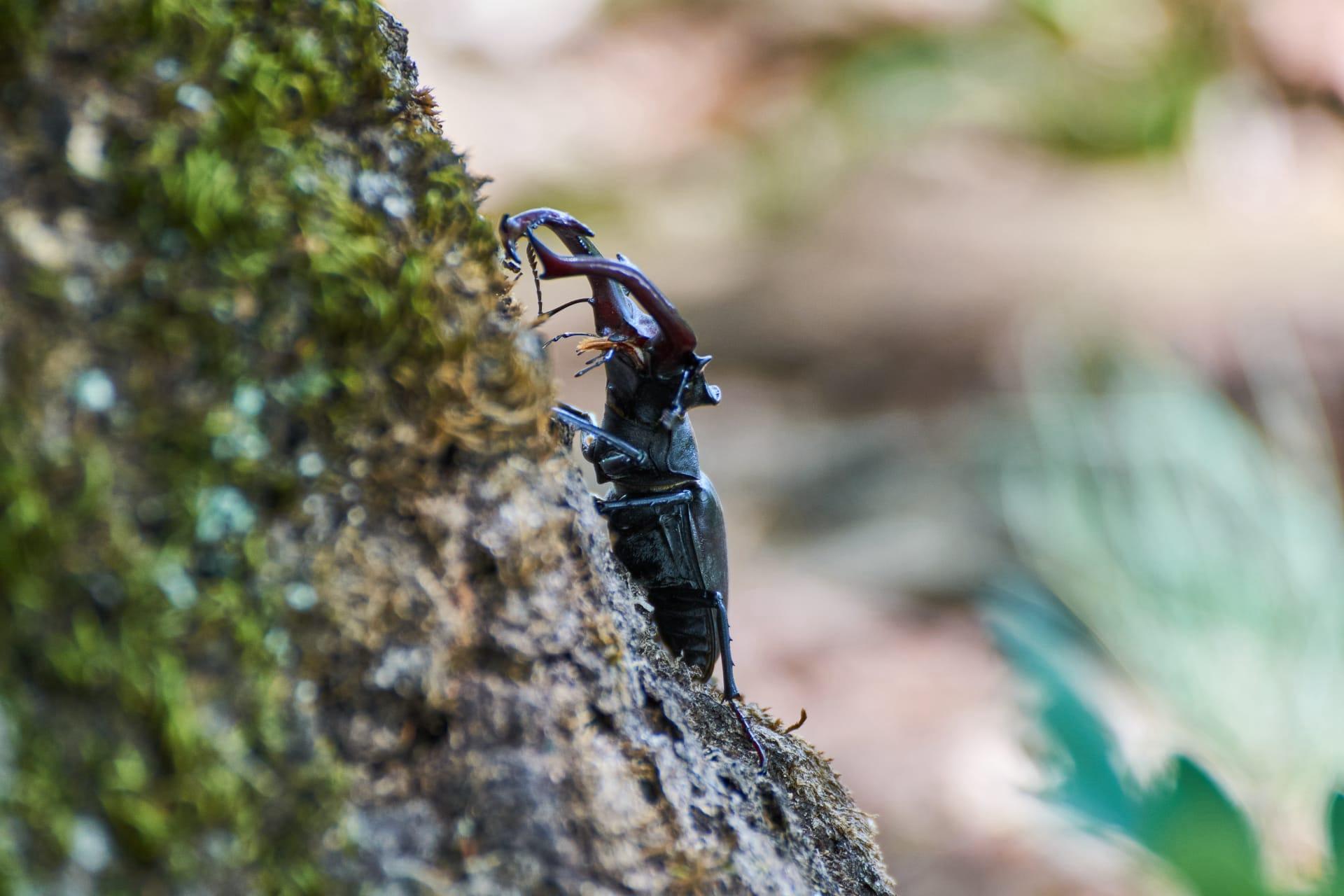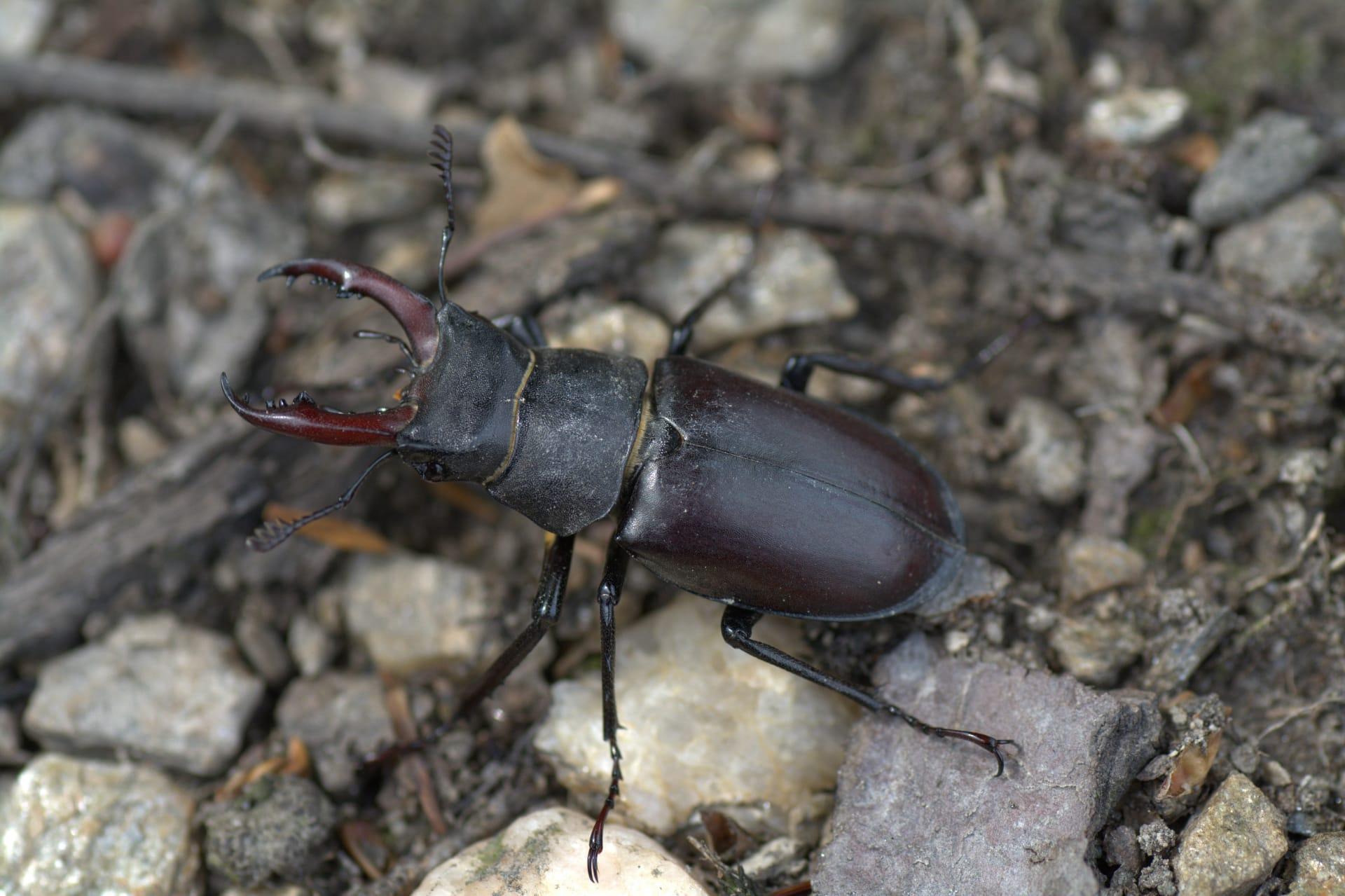1
Stag beetles, known for their impressive, antler-like mandibles, are a marvel of nature's design. The male beetles use these oversized mandibles, which can be as long as their bodies, primarily for combat with other males over territory and mates. Despite their fierce appearance, these mandibles are not very effective for biting or chewing. Instead, stag beetles primarily use their mandibles as a display of strength, much like deer antlers.
Another fascinating aspect of stag beetles is their life cycle, particularly their larval stage. The larvae of stag beetles can grow up to 4.5 inches (about 11.4 cm) in length, making them one of the largest beetle larvae. They spend an astonishing 4 to 6 years underground feeding on decaying wood. This long larval phase is crucial for their development, allowing them to accumulate enough energy to undergo metamorphosis into adult beetles.

2
Stag beetles have a unique adaptation in their anatomy – their jaws, or mandibles, vary greatly in size and shape between species. This variance is not just for show; it's a result of evolutionary adaptation to different habitats and lifestyles. For example, species with longer mandibles are often found in areas with denser forestation, where intense competition for mates drives the development of larger mandibles.
Moreover, stag beetles play a vital ecological role as decomposers. Their larvae feed on rotting wood, speeding up the process of decomposition and recycling nutrients back into the soil. This activity not only helps in forest nutrient cycling but also provides a habitat for many microorganisms and other small creatures, making stag beetles a keystone species in their ecosystem.

3
Despite their intimidating appearance, adult stag beetles are primarily vegetarian. They feed on tree sap, particularly from oak trees, which they lap up with their small, sponge-like mouths. This dietary preference contrasts sharply with their fearsome mandibles, which are more a tool for intimidation and mating rituals than for feeding.
Stag beetles also exhibit fascinating flight behavior. Despite their bulky bodies and seemingly unwieldy mandibles, they are capable of flight. Their wings are hidden under hard, protective wing cases called elytra. When they take off, these elytra lift, revealing the delicate flight wings underneath. This ability to fly plays a crucial role in their search for mates and new habitats, showcasing a surprising agility for such robust insects.

4
Stag beetles are not just significant in the wild; they have a cultural impact as well. In some countries, particularly in Asia, stag beetles are kept as pets and even used in beetle wrestling matches. These matches, where two male beetles lock mandibles, are a popular form of entertainment, reflecting the beetles' natural behavior in the wild where they battle over territory and mates.
The population of stag beetles is a matter of concern in many parts of the world. They are considered indicators of a healthy environment, particularly in European forests. A decline in their population often signals environmental issues like habitat loss and pollution. Conservation efforts are underway in many regions to preserve their habitats and ensure their survival, highlighting the importance of this remarkable insect in our ecosystems.

5
Stag beetles have a strong connection to mythology and symbolism. In ancient Greek mythology, they were associated with the god Thor because of their impressive mandibles, which were likened to the god’s hammer. In Japanese culture, stag beetles are symbols of strength and resilience, often featured in children's anime and toys.
The variation in stag beetle species across the globe is remarkable. There are over 1,200 species of stag beetles worldwide, each adapted to different environments and climates. This diversity is not only a testament to the adaptability and evolutionary success of these beetles but also serves as a crucial reminder of the vast biodiversity present in the insect world and the need to protect it.